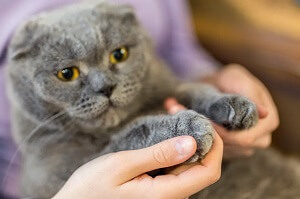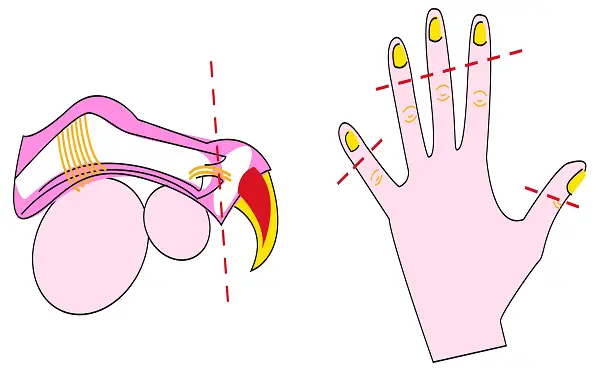How Much Does Laser Cat Declawing Cost?
Declawing is an operation to surgically remove the animal’s claws by amputating all or parts of the distant phalanges or the end bones of the animal’s fingers. Because the claw develops from germinal tissue in the third phalanx, amputation of the bone is necessary to completely remove the claw.
The terms “onychectomy” and “declawing” imply a removal of the claw, but a more appropriate description would be phalangectomy, the excision of the leg bone.
How Much Does Laser Cat Declawing Cost?
The cost of laser cat declawing is, on average, anywhere between $260 and $650, depending on your geographical location, your veterinarian, and the number of claws you want to be declawed. It is important to mention that some vet offices are not equipped with this type of equipment because only the equipment itself costs about $52,000.
If you choose to go with your cat to the Lafayette Veterinary Care Center, located in Lafayette, Louisiana, you should be prepared to pay around $320 just for the front claws.
About laser cat declawing
The standard declawing method is to amputate the cat’s claws with a scalpel or guillotine cut. The wounds are closed with stitches and the legs are bandaged. This surgical intervention to remove the claws is done at a young age under the effect of total anesthesia.
Another common method is the surgical intervention to remove the cat’s claws by laser. The light beam cuts the tissue by heating and vaporizing it. However, the risks of long-term diseases are the same as with the scalpel, accompanied by aggressive behavior problems.
The third known method of declawing is cat tendonectomy, in which the tendon that controls the claw in each tip is cut. After this intervention, the cat keeps its claws but cannot control or extend them when scratching. In cases of complications, a cat that has been given a tendonectomy may later require declawing.
What are the additional expenses?
There could be extra expenses you need to consider, such as pain medication and blood work.
In order to determine if the cat’s kidney and liver are functioning properly and are healthy enough for the cat to go under general anesthesia, a blood test will be necessary before the procedure. The cost of a typical blood test would be anywhere between $35 and $60.
You might also like our articles on the cost of cat declawing, dog dew claw removal, or dog tooth extraction.
After the procedure, the vet will prescribe pain medication, that costs anywhere between $15 and $40.
There were rare situations when the procedure was not 100% effective and the nail grew back. In this case, a second surgery would be necessary.
The majority of the vets would include the hospital stay in the quote, while some may charge an extra fee in case the cat needs to stay longer than expected due to complications.
Important things to consider
Many countries have banned declawing. The Humane Society of the United States opposes the declawing procedure, except in rare cases when it is necessary for medical purposes, such as the removal of cancerous tumors from the nails.
 Although common in North America, declawing is considered an act of animal cruelty in many countries. In the United States, declawing is prohibited in big cities like Los Angeles, San Francisco, or Beverly Hills.
Although common in North America, declawing is considered an act of animal cruelty in many countries. In the United States, declawing is prohibited in big cities like Los Angeles, San Francisco, or Beverly Hills.
According to specialists, in recent years, many countries, including Australia, Japan, Israel, Serbia, Portugal, France, the Netherlands, Germany, and Malta, prohibit or severely restrict surgery to remove the claws of cats. Unfortunately, there are still many countries practicing this cruel and merciless intervention.
Certain organizations in America have created online petitions to make cat declawing illegal.
Full declawing changes the way a cat’s foot touches the ground and can cause pain similar to wearing a pair of tiny shoes that squeak terribly. For a few days after the intervention, in order to be able to defecate, the kitten is placed on the floor with small newspapers so as not to irritate its paws from the litter box. This often leads to the habit of the animal to defecate all over the house.
Since felines that no longer have nails have no possibility to scratch quickly, they will resort to the second weapon of defense: biting. Most of the time, the owner is the victim, especially during petting.
Domestic cats use their toes when they walk. When the nails are removed permanently, the cat will have a modified gait, as it can no longer rely on the nails, nor on the fingers, due to the pain. Over time, this walking can cause problems in the joints of the legs, resulting in arthritis.
Tips for saving money
Regardless of how it is done, declawing should be the last option, advocates say. Take into consideration purchasing claw caps or a scratching post for solving the scratching problems.



Leave a Reply
Want to join the discussion?Feel free to contribute!